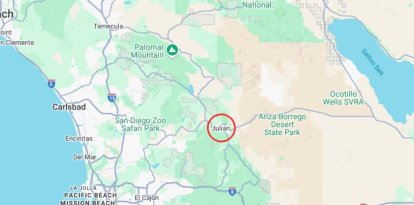Doctors warn of the emergence of a group of new synthetic opioids more potent than fentanyl
A study calls for investigating how nitazenes, a painkiller 1,000 times stronger than morphine and dubbed a 'Frankenstein's drug,' have entered the market.

(Pexels)
With fentanyl wreaking havoc, doctors warn of the emergence of a group of even more potent opioids, known as the Frankenstein drug. They are nitazenes, a subclass of synthetic opioids developed as an analgesic in 1950, 1,000 times more potent than morphine, which was never approved to be marketed, but which have now reached the streets. According to one study, patients treated for overdoses of these substances in hospitals required twice as many doses of naloxone as those treated for fentanyl.
Higher doses of naloxone to reverse overdoses of new opioids
The ultimate purpose of the research was to "determine naloxone administration and clinical sequelae of patients who were in the ED with NPO overdose compared with fentanyl OD." The study, developed in the emergency rooms of several hospitals between 2020 and 2022, warned that those who were treated by the "Novel Potent Opioids" (NPO) needed much higher doses than those who did because of fentanyl. The number of cardiac arrests was also higher among NPO users.
The main reasons for developing this research is that "Synthetic opioids, such as the fentanyl analogue and nitazene drug class, are among the fastest growing types of opioids being detected in patients in the emergency department (ED) with illicit opioid overdose (OD)." However, although protocols and legislation are being established in the case of fentanyl, NPOs remain largely unknown, even in the medical field, and the symptoms of overdose can be easily confused, putting the lives of those who used nitazenes at greater risk.
Warning to the medical community
The report warns that most of the patients who overdosed on nitazenes received two or more doses of the opioid overdose reversal drug naloxone, whereas most patients who overdosed on fentanyl received only a single dose of naloxone. "Physicians should be aware of the existence of these opioids in the drug supply to be adequately prepared to care for these patients and anticipate the need to use multiple doses of naloxone."
The study states that "the exact motivation for producing nitazenes and brorphine is unclear. Increased regulation of fentanyl and fentanyl analogues over the past decade may have led to a shift in precursor chemicals needed for production in clandestine laboratories that were not regulated. This change in precursor chemicals may have given rise to these newer, more potent opioids." At the same time, it urges the authorities to investigate who has introduced NPOs into the drug market.
RECOMMENDATION





















